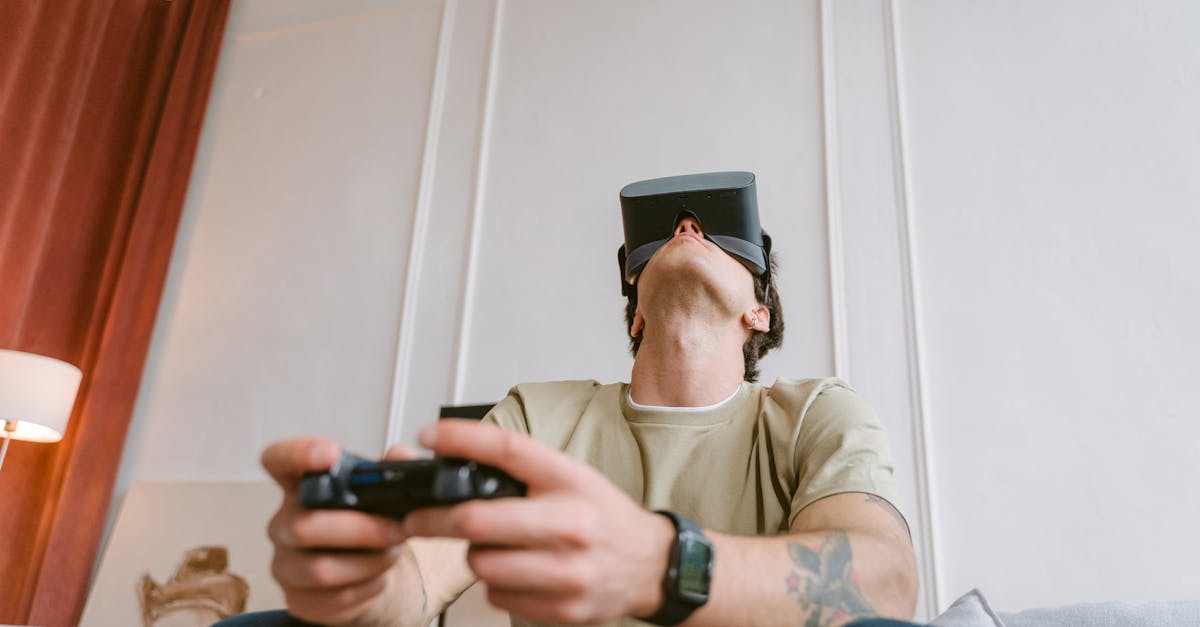Neck Pain Relief from Tech Neck Stress
In Short: Is tech neck causing you pain and discomfort? Strengthen your neck and improve your posture with targeted neck pain exercises and innovative solutions. Pulse Align Clinics propose a unique, simple approach to postural recalibration that can help you reclaim your health. Enjoy the benefits of improved posture, reduced stiff neck, and enhanced overall well-being. BOOK YOUR APPOINTMENT today!
Are you struggling with lower back pain and poor posture?
Tech Neck? Counteract Screen Stress with Pulse Align is an essential conversation in today’s digital era, where prolonged screen time leads to an increase in cervical pain and neck pain relief challenges. Studies show that a significant percentage of adults suffer from conditions like stiff neck and neck pain when turning head, which can be exacerbated by inappropriate ergonomic workstation setups. This common but often overlooked issue, also known as text neck, affects posture and leads to debilitating symptoms like neck spasms and neck pain radiating to arm. Pulse Align offers an innovative approach that targets these neck pain causes, combining proven neck pain exercises with advanced treatment modalities to foster optimal posture correction and overall well-being.

In today’s fast-paced digital world, many of us find ourselves facing the challenges of tech neck, a phenomenon born from extended screen time and poor posture. As our bodies adapt to modern technology, issues such as neck discomfort and tension can arise, interrupting our daily lives. Luckily, there are natural and effective ways to promote posture improvement and restore balance in our bodies. Enter Pulse Align—your partner in neuromuscular recalibration.
The Pulse Align Approach to Well-Being
Pulse Align leverages gentle stimulation to help clients return their bodies to an optimal state of function. Through focusing on muscle tone symmetry and enhancing overall well-being, we assist in promoting natural balance in a holistic manner. Our method does not target symptoms directly but encourages the body’s innate healing capabilities to flourish. With this gentle and technological approach, your journey towards improved posture and comfort can begin.
Holistic Benefits of Our Methods
Clients often report feeling the benefits long after their sessions, as they learn about the importance of posture and develop better alignment practices. Simple techniques, such as incorporating ergonomic principles in your workplace or taking brief breaks from screens, can significantly enhance your well-being. Individuals seeking to improve posture naturally or reduce neck discomfort have found success with our gentle techniques. Additionally, Pulse Align is suitable for the entire family, making it an inviting option for all ages, including children and pregnant women.
Book Your Consultation Today!
If you’d like to explore how Pulse Align can assist you on your journey to improved well-being, we encourage you to find a Pulse Align clinic near you. Whether in Montreal, La Prairie, Terrebonne, Chicoutimi, Charlesbourg, Saint-Jérôme, Châteauguay, Sainte-Marie, Les Escoumins, Granby, or Panama City, our family-friendly services are here to support you. Discover more about our methods and book your consultation today, where our dedicated team will help you embark on your path toward enhanced comfort and posture improvement.
Important Note: Pulse Align complements, but does not replace, conventional medical care. We recommend that clients remain under the supervision of their healthcare team for medical conditions. Clients consistently see that the benefits reported are due to the body’s natural ability to restore balance, not any specific intervention from Pulse Align.
- Monitor Setup: Ensure screens are at eye level to promote a neutral neck position.
- Frequent Breaks: Schedule short pauses to avoid prolonged screen time.
- Stretching Routines: Incorporate stretches to improve flexibility and relieve tension.
- Ergonomic Furniture: Use chairs and desks that support good posture.
- Mindfulness Practices: Engage in stress-reducing activities such as yoga or meditation.
- Physical Therapy: Seek professional guidance for exercises specific to neck pain relief.
- Warm Compresses: Apply warmth to relax tense neck muscles after long hours of screen use.
- Hydration: Drink plenty of water to maintain overall muscle function and health.
- Gentle Recalibration: Explore Pulse Align’s holistic approaches for neck pain management.
- Awareness and Adjustment: Be conscious of posture throughout the day, adjusting as needed.

In today’s digital world, the prevalence of tech neck has significantly increased, leading to common issues like neck pain, stiff neck, and the stress associated with prolonged screen use. At Pulse Align, we focus on solutions that promote neuromuscular health and posture improvement. This article delves into the causes and effective treatments for tech neck while highlighting the holistic recalibration approach provided by Pulse Align.
Take Action Today!
If you are suffering from the debilitating effects of tech neck, now is the time to take charge of your health. Book a consultation with Pulse Align to discover personalized exercise plans tailored specifically to your needs. Together, let’s work towards achieving better posture, reducing neck pain, and enhancing your quality of life.
Identifying Symptoms
People affected by tech neck may experience several uncomfortable symptoms such as:
- Neck pain radiating to the arm
- Pinched nerve in neck
- Neck pain when turning head
- Increased tension buildup leading to stress and anxiety
Effective Neck Pain Treatment and Exercises
To counteract the effects of tech neck, integrating neck pain exercises into your daily routine is essential. Here are several effective exercises to get started:
- Chin Tucks: This simple exercise helps realign the neck over the shoulders. Gently tuck your chin while keeping your spine straight.
- Doorway Stretch: Stand in a doorway; place your arms at a 90-degree angle against the wall, then lean forward to stretch your chest and shoulders, relieving tension.
- Neck Side Bends: Slowly tilt your head towards each shoulder while keeping the rest of your body still. This promotes flexibility and reduces tightness.
Implementing Ergonomic Workstation Setups
Creating an ergonomic workstation is vital when it comes to posture correction and reducing neck pain causes. Here are a few tips for setting up:
- Keep your monitor at eye level to prevent strain.
- Utilize chairs that support your lumbar spine.
- Incorporate a standing desk to promote core strengthening.
Recalibration and Holistic Support at Pulse Align
At Pulse Align, we emphasize the importance of symmetry in wellness. By focusing on holistic practices that include stress management techniques and specialized therapy, we help address the underlying issues related to tech neck. Our individualized approach fosters a natural balance within the body, enhancing overall well-being.
| Issue | Pulse Align Solutions |
| Poor Posture | Use ergonomic setups to ensure screens are at eye level. |
| Muscle Tension | Incorporate regular stretching routines to alleviate stiffness. |
| Technology-Induced Stress | Engage in mindfulness and stress-reduction activities. |
| Frequent Discomfort | Apply gentle manual techniques to relieve muscle tightness. |
| Limited Mobility | Participate in holistic movement practices to enhance flexibility. |
| Chronic Symptoms | Explore guided therapies and supportive resources available at Pulse Align. |
| Breaks and Rest | Set reminders for breaks to reduce strain on neck muscles. |
| Desk Setup | Utilize monitor stands and adjust chair height for comfort. |
| Long Screen Time | Limit continuous exposure to screens through structured schedules. |

Reclaiming Wellness: Client Experiences with Pulse Align
Clients have consistently reported transformative results in their lives since discovering Pulse Align’s holistic approach to Tech Neck and screen-induced stress. Many have shared their journeys of regaining balance and strength, expressing gratitude for the natural methods that enable their bodies to recalibrate. In La Prairie, individuals have found a safe haven at our clinics, leading to a remarkable improvement in their overall wellness.
One client from Mont-Royal remarked, “I never realized how much my posture was impacting my life until I visited Pulse Align. The exercises and techniques I’ve learned have greatly reduced my neck pain and stress associated with long hours on my computer. I feel more energized and balanced throughout my day.” This sentiment echoes throughout our community, especially in locations like Terrebonne and Châteauguay, where clients find renewed hope and vitality through our nurturing practices.
In Deux-Montagnes, another satisfied client noted, “The guidance from the Pulse Align team helped me understand my body’s signals. Their strategies not only alleviated my neck tension but also empowered me to manage stress effectively. I’ve never felt this good before!” This highlights the profound impact that our supportive environment and customized care can have on individuals facing the challenges of modern-day screen usage.
From Sainte-Marie to Chicoutimi, clients appreciate our collaborative approach that works alongside their healthcare teams. This integration allows for comprehensive support on their wellness journey, reinforcing the body’s innate ability to heal. Many have praised how our services complement traditional treatments and help unlock a new realm of body function.
Whether you are in Saint-Jérôme or Panama City, the benefits of addressing Tech Neck through Pulse Align are evident. Our unique techniques not only relieve pain but also enhance mobility and overall well-being. Join the growing family of clients who have successfully recalibrated their health with us!
To explore how our services can enhance your wellness journey, visit Our Clinics and discover how we can support you in reclaiming your health.
In a world dominated by technology, postural problems have become increasingly prevalent, leading to concerning issues like neck pain. The demands of prolonged sitting and constant screen time often result in misalignment of the spine, placing unnecessary strain on the neck muscles. This tension not only creates discomfort but also hampers our ability to engage fully in daily activities.
Among these modern challenges, tech neck has emerged as a significant concern. Spending excessive time hunched over smartphones, computers, or tablets can lead to muscle fatigue and soreness. It is crucial to adopt strategies that mitigate these symptoms, preventing further pain and promoting overall neck health.
To combat neck tension, especially at work, incorporating stretching routines can greatly improve flexibility and reduce muscle tightness. Regular breaks, stress reduction practices, and ergonomic setups can make a noticeable difference, enhancing comfort and productivity in the workplace.
Effective prevention of neck pain involves making conscious adjustments to our daily habits. Maintaining a neutral neck position by ensuring screens are at eye level, taking frequent breaks, and engaging in regular physical activity are essential components of a proactive approach. This way, we not only alleviate existing discomfort but also build resilience against future issues.
Further, chiropractic care serves as an excellent method to relieve discomfort associated with poor posture and spinal misalignment. By seeking regular adjustments, individuals can restore proper alignment, ease tension, and support overall well-being.
Our Mission
At Pulse Align, our mission is to deliver evidence-based, client-centered treatments that address the underlying causes of pain and dysfunction. By integrating advanced techniques and technologies, we strive to empower each person to take control of their health, ensuring a high standard of care, lasting relief, and an improved quality of life.
To learn more about our approach and available services, please visit www.pulsealign.com and find a location near you here.
Unlock Pain Relief with TAGMED’s Advanced Spinal Decompression Therapy
In the quest for relief from chronic pain, TAGMED has pioneered a powerful solution tailored to patients struggling with conditions such as herniated discs, bulging discs, and spinal stenosis. Our advanced Spinal Decompression Therapy offers a non-surgical alternative specifically designed to address moderate-to-severe disc problems. By gently relieving pressure on affected discs and nerves, this specialized technique not only enhances mobility but also alleviates pain while supporting your body’s natural healing process. If you’ve reached a plateau with other therapies, discover how TAGMED’s evidence-based decompression approach can help you resume an active, comfortable life.
Have you tried conventional treatments and still struggle with persistent back pain due to a severe disc condition?
Mechanism of Action
TAGMED’s neurovertebral decompression applies a controlled, progressive traction force to the spine. This innovative method increases the space between vertebrae, effectively reducing pressure on intervertebral discs and nerve roots. By enhancing fluid circulation in the targeted area, this process helps to lower inflammation and relieve pain. For individuals suffering from chronic back pain or sciatica, this reliable, non-invasive solution promotes healing, allowing patients to find restoration and relief.
Specific Benefits
The non-invasive nature of TAGMED’s spinal decompression can significantly alleviate chronic pain associated with ailments like herniated discs or foraminal stenosis. By reducing pressure on nerve structures and optimizing fluid circulation around the discs, this treatment facilitates a swifter recovery and enhances the quality of life for a diverse range of patients seeking relief from persistent discomfort.
Comparison with Other Treatments
When compared to common treatments such as pain medications, corticosteroid injections, surgery, or traditional physiotherapy, TAGMED’s neurovertebral decompression technology stands out. This approach avoids invasive interventions and minimizes medication-related risks, leading to a potentially faster path to recovery. It provides a compelling choice for patients looking for safer, evidence-based alternatives to managing their chronic pain symptoms.
Case Studies or Testimonials
Numerous patients have shared their transformative experiences with TAGMED’s neurovertebral decompression. Testimonials reflect improvements such as long-lasting pain relief, quicker resumption of daily activities, and a decreased reliance on pharmaceuticals. These real-world accounts illustrate the tangible results and practical benefits of this therapeutic approach, affirming its value in managing conditions like degenerative disc disease and facet syndrome.
Transform Your Well-Being with Pulse Align
If you’re dealing with the effects of tech neck due to prolonged screen time, it’s essential to consider a holistic approach that empowers your body. Pulse Align offers a gentle method for posture correction that focuses on enhancing your wellness and helping you reclaim your natural alignment.
By choosing Pulse Align, you open the door to a world of benefits, including improved posture, reduced discomfort, and increased mobility. Clients have experienced enhanced well-being as they embrace a lighter, more balanced existence.
At the heart of our philosophy is a steadfast commitment to supporting your body’s incredible ability to heal itself. Rather than treating specific symptoms, we aim to create an environment where your body can thrive and operate at its best. This non-invasive, supportive approach cultivates a renewed sense of vitality.
Are you ready to embark on a journey towards improved wellness? Discover the Pulse Align difference today and see how our gentle, holistic methodologies can positively impact your life. Schedule your consultation now to start your path towards a healthier and more balanced you. With Pulse Align, a brighter, pain-free future is within reach.

Do you suffer from a chronic condition that responds little or not at all to conservative treatments?
In today’s digital age, many individuals face the growing challenge of discomfort stemming from prolonged screen time, often referred to as Tech Neck. At Pulse Align, we recognize this concern and offer a non-invasive, innovative method designed to restore the body’s natural balance through gentle, imperceptible pulses. This holistic approach aims to promote improved posture and alleviate any muscle and joint tension, allowing clients to embrace their daily lives with renewed vitality.
Pulse Align focuses not on discomfort or specific conditions but rather on fostering the body’s natural recalibration process. Our gentle techniques encourage the body to achieve harmony, which can lead to remarkable improvements in overall comfort and posture. By prioritizing the body’s ability to self-correct, we aim to create an environment where clients can thrive without the need for traditional interventions.
At the heart of Pulse Align’s philosophy is our personalized approach tailored to meet each client’s unique needs. Many of our clients have shared their experiences, highlighting notable improvements in tension and overall wellness. They describe a feeling of lightness and ease, attributing their transformations to the supportive environment we cultivate and the gentle stimulation we provide. Their testimonials speak volumes about the positive impact of our services on their journeys toward greater well-being.
We invite you to explore the Pulse Align website to learn more about our offerings and discover nearby locations in cities such as La Prairie, Mont-Royal, Terrebonne, and many others. Our team is dedicated to ensuring that our services complement your journey toward achieving a balanced lifestyle. It’s important to note that while we are committed to enhancing your wellness experience, our approach works alongside—not as a substitute for—professional healthcare. We encourage you to keep your healthcare team informed and involved in your wellness journey.
To experience the full benefits of our safe, non-invasive, and family-friendly services, we invite you to book an appointment online today. You can visit us at Pulse Align and take the first steps towards enhancing your neuromuscular health and promoting symmetry within your body. Dive into an enriching wellness experience that is designed not just for you but for every member of your family.
Frequently Asked Questions
Neck Pain
- Can poorly adjusted eyeglasses cause neck pain?Yes, tilting your head to see properly can add strain to the neck.
- Do strengthening exercises help?Yes, strengthening the neck and shoulder muscles can stabilize the cervical region and reduce pain.
- Can massage worsen neck pain?A gentle, appropriate massage shouldn’t worsen pain. If it does, stop and consult a professional.
- Does lack of sleep worsen neck pain?Yes, inadequate sleep leads to muscle fatigue and increases sensitivity to pain.
- Is swimming helpful?Yes, swimming improves posture, strengthens back muscles, and can relieve cervical tension.
- Can I strengthen my neck with resistance bands?Yes, specific exercises with bands help strengthen neck muscles, but proceed cautiously.
- Does core strengthening help?A strong core improves overall posture, reducing strain on the neck.
- Can I use heating patches?Yes, heat patches can provide temporary relief by relaxing muscles and improving blood flow.
- Can dental issues cause neck pain?Sometimes, TMJ disorders or teeth grinding can cause muscle tension radiating to the neck.
- What are common causes of neck pain?Frequent causes include poor posture, stress, muscle tension, cervical osteoarthritis, herniated discs, or trauma.
David Lambert understands that neck pain is far more than a physical ache—it’s a roadblock to living the life you love. As a Neck Pain Awareness Advocate at Pulse Align, he is committed to shedding light on the underlying causes, sharing practical relief strategies, and offering genuine support to readers seeking to reclaim their freedom of movement. With a warm, empathetic voice and a keen eye for the latest in pain management research, David leads conversations that uplift, educate, and inspire. He believes that every individual deserves to feel heard, understood, and guided toward healing, one step at a time.
Medical Disclaimer
The information and advice provided on this site do not replace the advice, diagnosis, or treatment of a healthcare professional. Please note that the author of this article is neither a doctor nor a specialist in a medical specialty as defined by the Collège des médecins du Québec. Manual medicine, functional medicine, and sports medicine as described on this site exclude any medical treatment or diagnosis made by a doctor or medical specialist. Always consult your doctor for any medical questions. For more details, please read our complete Legal Notice.
References
- Jayashankar, Venati, and M. Srinivas Naik. “A Research Study on Deaths Due to Injuries to Abdomen Brought to Ananthapuram Govt. Medical College Mortuary, Andhra Pradesh from January 2010 to December 2016.” Medico-Legal Update, vol. 18, no. 2, 2018, pp. 181–84, https://www.indianjournals.com/ijor.aspx?target=ijor:mlu&volume=18&issue=2&article=040.
- Liu, Tao. “Impact of Posture and Recovery Methods on Sports Injuries.” Revista Brasileira de Medicina Do Esporte, vol. 28, no. 6, 2022, pp. 719–22, https://www.scielo.br/j/rbme/a/BRzZwhZBjXSLYCHNH3PpDSL/?lang=en.
- Kaynaroğlu, Volkan, and Yusuf Alper Kiliç. “Archery-Related Sports Injuries.” Sports Injuries, edited by Mahmut Nedim Doral, Springer Berlin Heidelberg, 2012, pp. 1081–86, https://doi.org/10.1007/978-3-642-15630-4_143.
- Nielsen, Jesper Möller, and Mats Hammar. “Sports Injuries and Oral Contraceptive Use: Is There a Relationship?” Sports Medicine, vol. 12, no. 3, 1991, pp. 152–60, https://doi.org/10.2165/00007256-199112030-00002.
- Seah, Pei Zhen, et al. “Risk Stratification of Paediatric Sports Injuries Seen at a Tertiary Hospital.” Ann Acad Med Singap, vol. 49, 2020, pp. 955–62, https://www.annals.edu.sg/pdf/49VolNo12Dec2020/V49N12p955.pdf.
- Bahr, Roald, and Sverre Mæhlum. Clinical Guide to Sports Injuries. Human Kinetics, 2004, https://books.google.com/books?hl=fr&lr=&id=mmRnr0x0p4QC&oi=fnd&pg=PA86&dq=%22sports+injuries%22+%2B+abdomen&ots=mF6T-o_I4q&sig=CtFsHciVC0aKP7AIcw-wVJdjT6k.
- Guermazi, Ali, et al. “Sports Injuries at the Rio de Janeiro 2016 Summer Olympics: Use of Diagnostic Imaging Services.” Radiology, vol. 287, no. 3, 2018, pp. 922–32, https://doi.org/10.1148/radiol.2018171510.
- Jarraya, Mohamed, et al. “Sports Injuries at the Rio de Janeiro 2016 Summer Paralympic Games: Use of Diagnostic Imaging Services.” European Radiology, vol. 31, no. 9, 2021, pp. 6768–79, https://doi.org/10.1007/s00330-021-07802-3.
- Lenjani, Basri, et al. “Emergency Medical Care and Management of Sports Injuries on the Football Court.” Albanian Journal of Trauma and Emergency Surgery, vol. 5, no. 1, 2021, pp. 773–77, http://journal.astes.org.al/AJTES/index.php/AJTES/article/view/172.
- Engebretsen, Lars, et al. “Sports Injuries and Illnesses during the Winter Olympic Games 2010.” British Journal of Sports Medicine, vol. 44, no. 11, 2010, pp. 772–80, https://bjsm.bmj.com/content/44/11/772.short.



